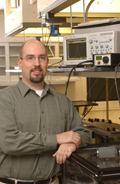Syracuse Views Summer 2025
We want to know how you experience Syracuse University. Take a photo and share it with us. We select photos from a variety of sources. Submit photos of your University experience by sending them directly to Syracuse University News at…

 The research by Timothy Korter, associate professor of chemistry in SU’s
The research by Timothy Korter, associate professor of chemistry in SU’s